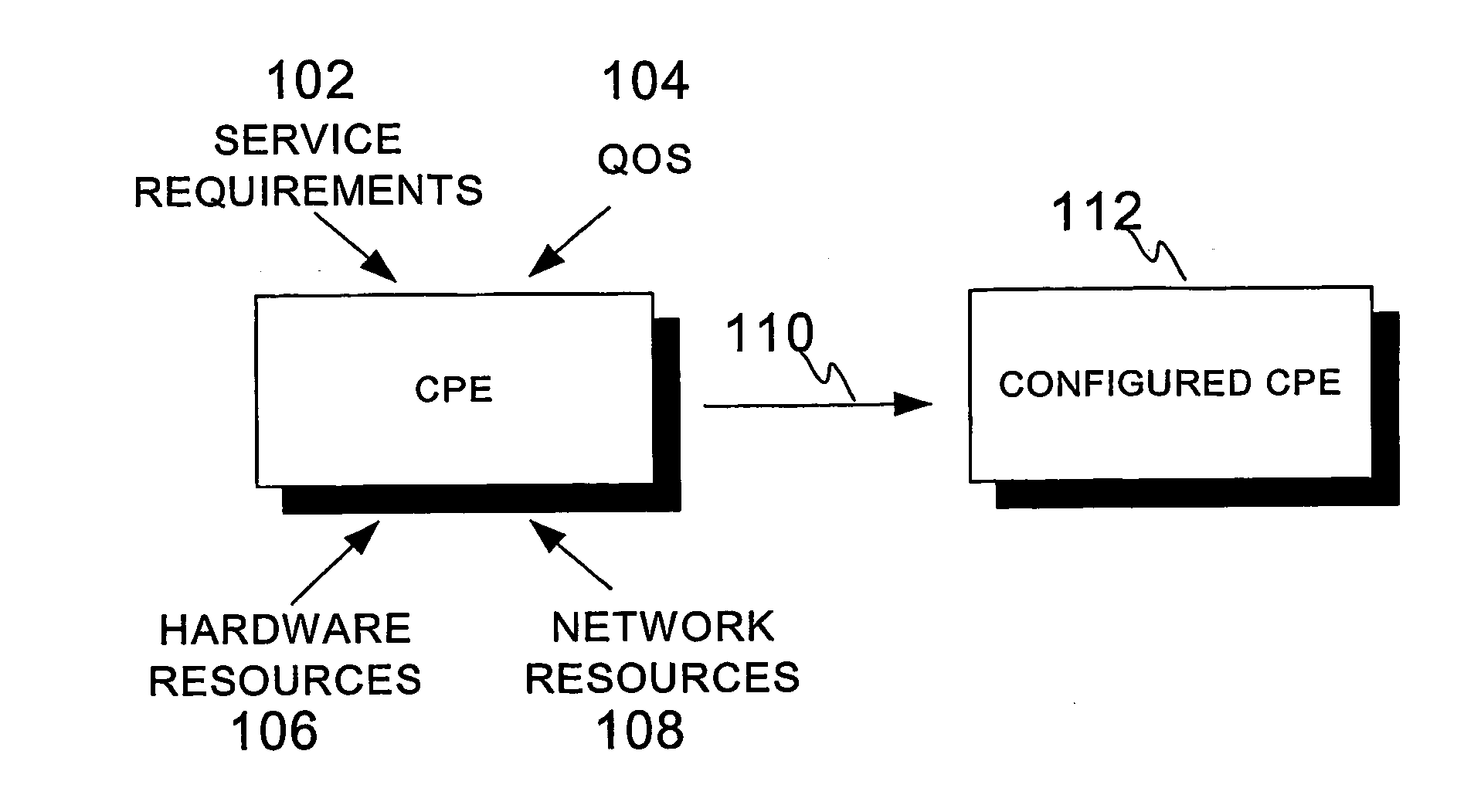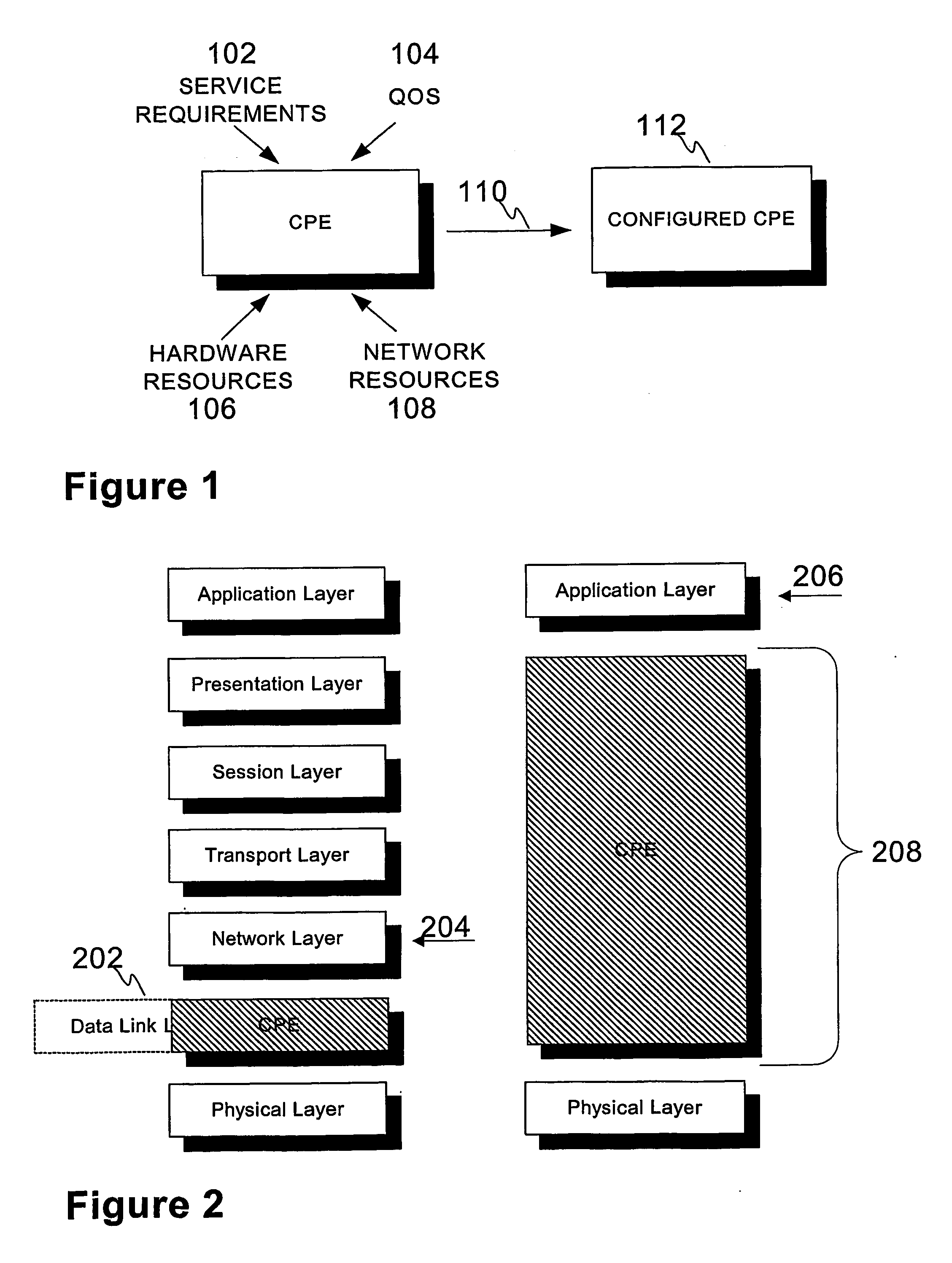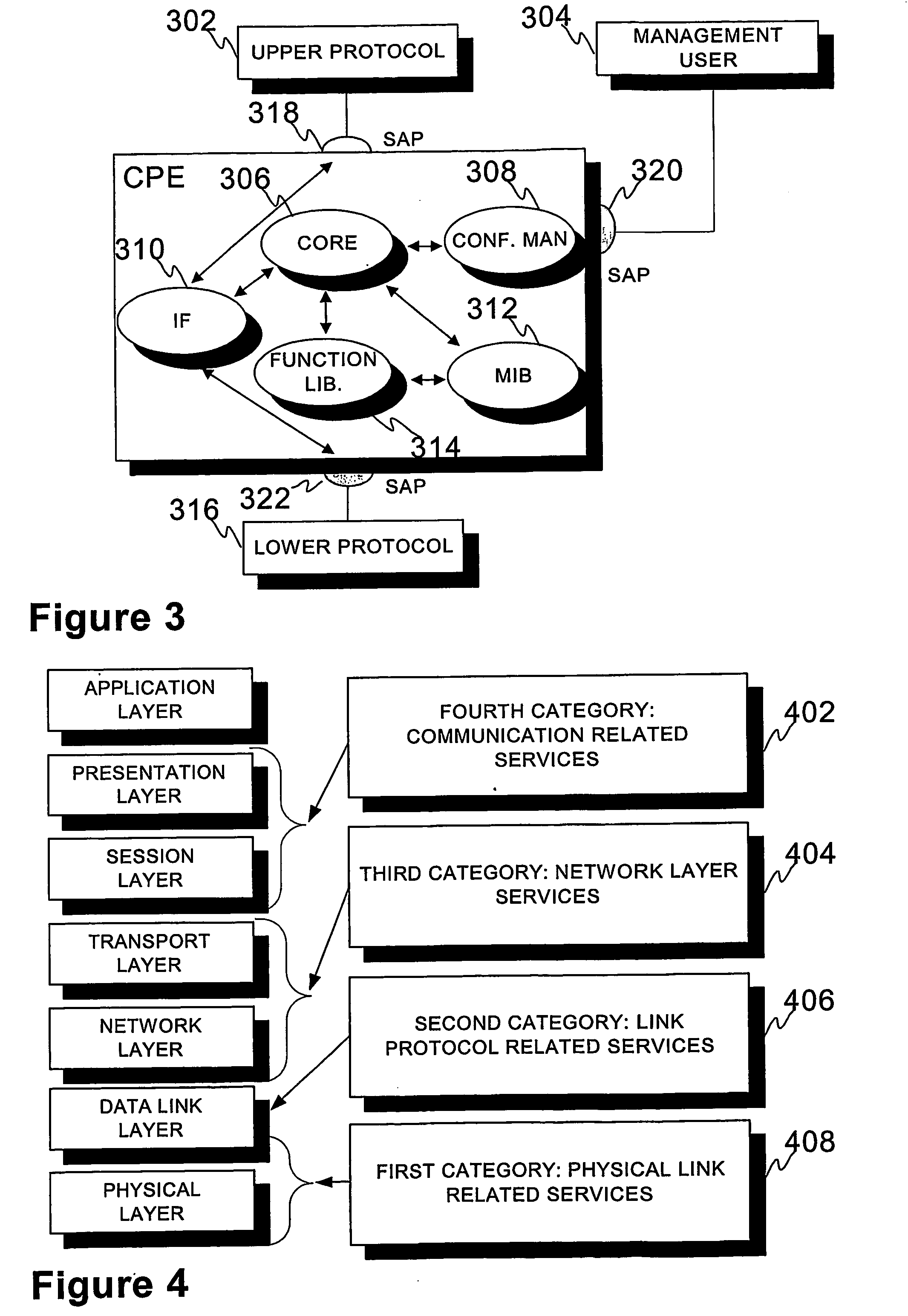Configurable Protocol Engine
a protocol engine and protocol technology, applied in the field of communication protocols, can solve the problems of not being able to meet the needs of all specific purposes, the number of defects remains more or less intact, and the communication services provided by the protocols in the general-purpose protocol stack are not always adequate for all specific purposes, so as to achieve the effect of reducing the number of defects
- Summary
- Abstract
- Description
- Claims
- Application Information
AI Technical Summary
Benefits of technology
Problems solved by technology
Method used
Image
Examples
Embodiment Construction
[0070]FIGS. 1-3 were already discussed in conjunction with the description of the summary of the invention.
[0071]FIG. 4 discloses, by way of example only, how typical protocol services may be categorized in relation to the OSI reference model. The protocol functions each of which realizes a simple protocol task are stored in the CPE function library. Whenever the CPE must be capable of providing protocol services that cover the most common services offered by the layers from 2 to 6 in the OSI model, the function library must include several protocol functions to carry out such services. Generally speaking, the protocol services can be divided into four categories according to which layer they are normally provided on.
[0072]The first category 408 of services is related to physical link services including link management and frame control. Also error detection services, radio management, and power save management are included in this category.
[0073]The second category 406, link protoc...
PUM
 Login to View More
Login to View More Abstract
Description
Claims
Application Information
 Login to View More
Login to View More - R&D
- Intellectual Property
- Life Sciences
- Materials
- Tech Scout
- Unparalleled Data Quality
- Higher Quality Content
- 60% Fewer Hallucinations
Browse by: Latest US Patents, China's latest patents, Technical Efficacy Thesaurus, Application Domain, Technology Topic, Popular Technical Reports.
© 2025 PatSnap. All rights reserved.Legal|Privacy policy|Modern Slavery Act Transparency Statement|Sitemap|About US| Contact US: help@patsnap.com



